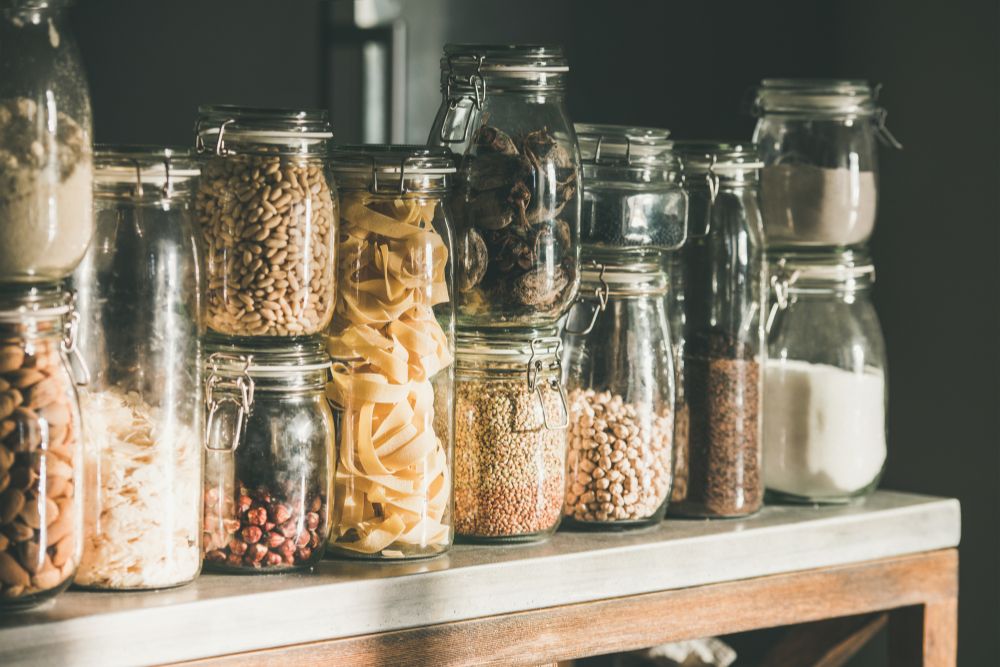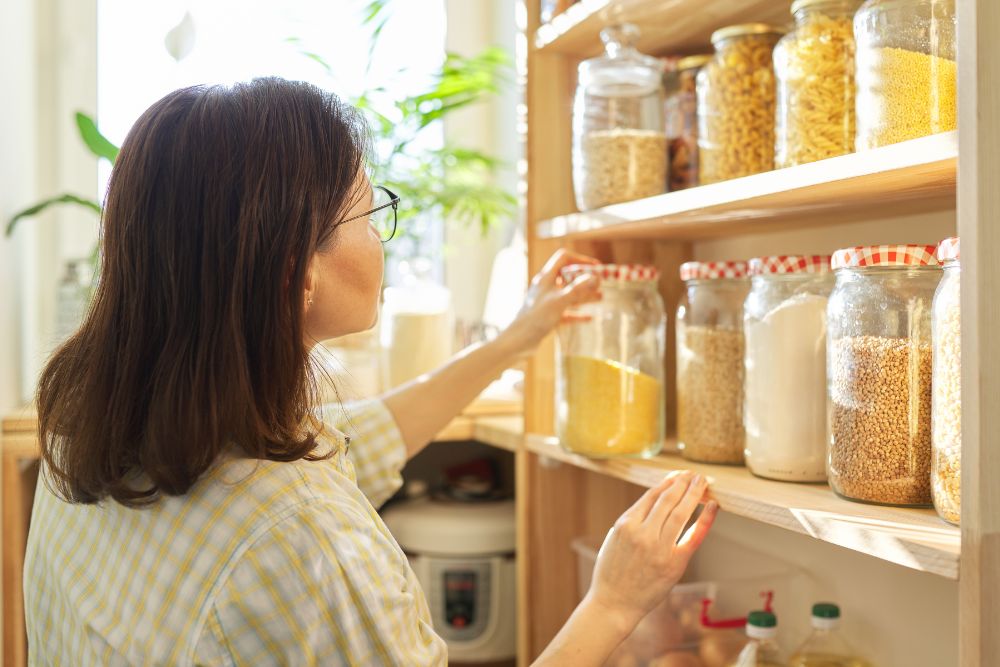One of the cornerstones of your emergency supply kit should be food.
For even the most basic short-term emergency situation, you should stock at least 7 days’ worth of food for your family. The food you keep for emergencies can range anywhere from canned goods to mac & cheese to rice. The problem is that it can be tough to find the right balance of foods that provide all of your nutritional needs while still being tasty and having a long shelf-life.
Beyond short-term supplies, having a larger supply of 30+ days of food will give you more options if things go south. I would recommend storing as much food as your means and space allow. With the proper attention, you could easily build up a year’s worth of (rotating) emergency food for relatively cheap.
How Much Food Do You Need?
How many calories you need to maintain your health depends on your gender, height, weight, age, and other health conditions. According to health.gov, an average male in his 20s that is moderately active will need approximately 2,600-2,800 calories a day to maintain his body weight, while an average female will require around 2,000. Any less, and you may start losing weight (including muscle mass).
You can use the FDA’s calculator to determine how many calories you should be consuming depending on your height and weight. If you’re sedentary (not moving around much), you will not be burning as many calories during the day, but remember that in an emergency you may be doing more activity (without the help of machines) such as lifting, hauling, or walking. If you’re active, you should try to increase your calorie intake.
There are several manufacturers of pre-packaged survival food “kits” that are marketed as being enough food for one person for a year. These are great kits to get you started — and we’ll be reviewing their foods soon — but make sure you check their websites for how many calories are included in the kit. One manufacturer bases their calculations on a 1,600/day calorie diet, which is probably less than what you may be used to eating.
What Types of Food?
Typical characteristics of great survival foods include:
- High in nutritional and caloric content
- Long-term shelf life
- No special storage requirements
- No special storage requirements after opening if the item won’t be entirely consumed immediately
- Easy to cook with minimal tools, supplies, and water
- Something you would normally eat or find appealing
- The cheaper the better
You may not be able to find foods that match all of the above criteria, but there are a lot of different foods on the market that will probably fit your needs and tastes.
The nutritional content should be listed on any food you purchase. You’ll want a good mix of proteins, carbohydrates, and fats.
Shelf-life is essential as your emergency supply will most likely be stored in a place where you won’t see it every day. I wouldn’t recommend purchasing any food that has less than a 1 year shelf-life. Luckily, many canned goods have a 2-5 year shelf life, and specialty dried or dehydrated survival foods can be stored for 10-25 years or more. Remember to check the expiration dates on any goods you purchase. Some foods will sit in stores for months or years at a time before they’re purchased.
Emergency foods shouldn’t require any special storage conditions. Make sure they don’t need any artificial storage conditions, such as being frozen, which you might lose if the power goes out. Your stored food will last longer in cooler, dryer, darker conditions, such as in a basement.
Many emergency foods are sold in bulk. Check with the manufacturer or instructions on the container so you know how soon you’ll need to consume the food before it goes bad once it’s opened. You don’t want to open a can that has 10 days’ worth of food for yourself if it will go bad in 3 days.

Be aware of how the food needs to be prepared. Many emergency foods require either heat or water (or both). Ideally, if you have a small gas-powered stove and a supply of water, you should be able to prepare all of your food.
The good thing is a lot of the foods suitable for long-term storage and survival can be purchased in bulk quantities. Many stores, such as Costco or Sam’s Club, sell basic foods such as rice, beans, and tuna in bulk for cheap. If you build up your supply slowly over time, you should be able to find good deals so you don’t have to break the bank.
Finally, make sure you actually like the taste of the food. There’s no point in getting 100 lbs of beans if you get sick of them after a few bites.
With the above characteristics, there are a ton of great foods on the market that could fit into your emergency supply.
Here are some examples of store-bought supplies:
In addition to meals, you should try to keep extra spices and flavors around to improve the meals. Many of these are available in bulk from Costco and Sam’s Club:
- Sugar
- Salt
- Honey
- Spices
- Tobasco
- Cooking oil
If you have the time and patience, you can also prepare your own emergency food supplies by methods such as canning, vacuum-sealing, and dehydrating.
Where and How to Store Them
An ideal place to store your emergency food supply is in a dark, cool, dry location. A basement is a great choice as you get free natural cooling from the ground.
A great way to organize your food is with a food log. For each item, list the type, quantity, date purchased, and expected shelf life with an expiration date. If you maintain this list and monitor it every few months, you can easily tell what foods are about to expire and need to be replaced.
If you’ve purchased items you normally eat (such as rice or tuna), try to rotate them into your kitchen pantry. That way, you aren’t throwing away foods that have expired. Make sure to replace any foods you eat with new ones, putting them at the back of your shelf so you know what to eat next.
It’s a good idea to keep some basic food preparation tools near your emergency supply, such as a can opener, lighter, small gas-powered stove, and gas cans. Make sure you have enough water to prepare the food with.
Conclusion
As you can see, there are many things to consider when building your food emergency supplies. Not only do you need to think about the types of foods that will be most satisfying and nutritious for you, but also how long they will last, how they need to be prepared, and where to store them.
Make sure you keep a food log so you can track what items are getting close to their expiration date and replace them accordingly. And remember, it’s important to rotate your stock so that none of it goes bad!

